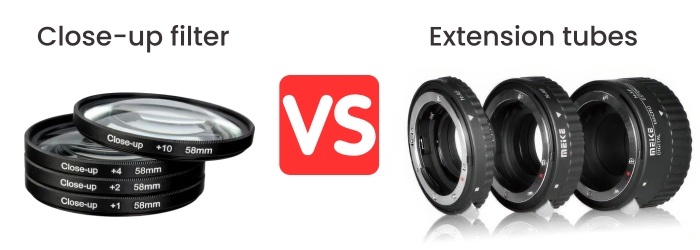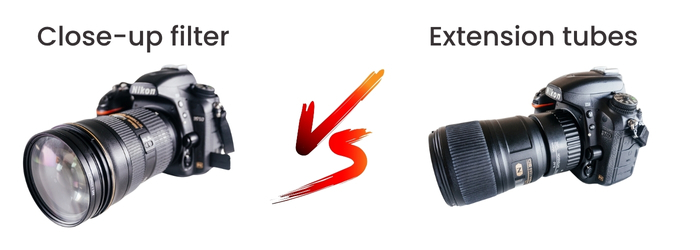
Discover when to use close-up filters (diopters) versus extension tubes for budget macro photography. Close-up filters screw onto your lens for quick, hand-held shots with telephoto lenses, offering more working distance but slightly reduced image quality if using cheap single-element glass. Extension tubes mount between the camera and lens, adding magnification without extra glass, making them ideal for short lenses and controlled setups like tabletop or product photography. This guide explains magnification, working distance, image quality, compatibility, and practical tips, helping beginners choose the right tool for flowers, coins, insects, and miniatures without buying a dedicated macro lens.
 You don’t need a dedicated macro lens or a fancy camera to explore the tiny world. With a basic smartphone and a budget-friendly Apexel clip-on macro lens, you can capture detailed close-ups of flowers, insects, textures, jewellery, and more for the price of a takeaway meal.
You don’t need a dedicated macro lens or a fancy camera to explore the tiny world. With a basic smartphone and a budget-friendly Apexel clip-on macro lens, you can capture detailed close-ups of flowers, insects, textures, jewellery, and more for the price of a takeaway meal. A definitive guide to the top budget-friendly macro lenses of 2025/2026, including third-party manual focus options and high-value used classics, for Canon, Nikon, Sony, and Fuji mounts. Achieve life-size magnification (1:1) without compromising on sharpness or detail.
A definitive guide to the top budget-friendly macro lenses of 2025/2026, including third-party manual focus options and high-value used classics, for Canon, Nikon, Sony, and Fuji mounts. Achieve life-size magnification (1:1) without compromising on sharpness or detail. Punch in your camera model to see the native macro lenses it supports, which systems need adapters, and how to expand the data set as you test more bodies.
Punch in your camera model to see the native macro lenses it supports, which systems need adapters, and how to expand the data set as you test more bodies. A clear, beginner-friendly explanation of why lenses aren’t universal. Learn how mounts, flange distances, and electronics affect compatibility, what adapters can (and can’t) fix, and how to choose the right combination of camera and lenses for your setup.
A clear, beginner-friendly explanation of why lenses aren’t universal. Learn how mounts, flange distances, and electronics affect compatibility, what adapters can (and can’t) fix, and how to choose the right combination of camera and lenses for your setup. If you want one reliable, high-quality macro solution that works with most of your lenses, the Raynox DCR-250 delivers. This compact, clip-on macro lens transforms any standard lens into a high-magnification close-up powerhouse for under $100. Compared with extension tubes, simple close-up filters, and achromatic diopters, it offers unmatched versatility and optical performance.
If you want one reliable, high-quality macro solution that works with most of your lenses, the Raynox DCR-250 delivers. This compact, clip-on macro lens transforms any standard lens into a high-magnification close-up powerhouse for under $100. Compared with extension tubes, simple close-up filters, and achromatic diopters, it offers unmatched versatility and optical performance. Review of the Albinar ADG 80–200mm f/3.9 vintage zoom lens with built-in macro mode. An affordable (£30–40) alternative for beginner macro photographers, it offers close focusing, good sharpness at f/8–f/11, and comfortable working distance for flowers, insects, and product shots. Pros, quirks, and modern adapter options are covered.
Review of the Albinar ADG 80–200mm f/3.9 vintage zoom lens with built-in macro mode. An affordable (£30–40) alternative for beginner macro photographers, it offers close focusing, good sharpness at f/8–f/11, and comfortable working distance for flowers, insects, and product shots. Pros, quirks, and modern adapter options are covered. Quickly calculate the effective aperture for macro photography with extension tubes and see how magnification affects light and depth-of-field.
Quickly calculate the effective aperture for macro photography with extension tubes and see how magnification affects light and depth-of-field. Review of the JJC 77mm Close-Up Filter Kit (+2, +4, +8, +10) for beginner macro photography. Affordable and easy to use, these filters let you capture flowers, insects, and fine details without a dedicated macro lens. Pros, cons, and alternatives like extension tubes and macro lenses are discussed.
Review of the JJC 77mm Close-Up Filter Kit (+2, +4, +8, +10) for beginner macro photography. Affordable and easy to use, these filters let you capture flowers, insects, and fine details without a dedicated macro lens. Pros, cons, and alternatives like extension tubes and macro lenses are discussed. Discover when to use close-up filters (diopters) versus extension tubes for budget macro photography. Close-up filters screw onto your lens for quick, hand-held shots with telephoto lenses, offering more working distance but slightly reduced image quality if using cheap single-element glass. Extension tubes mount between the camera and lens, adding magnification without extra glass, making them ideal for short lenses and controlled setups like tabletop or product photography. This guide explains magnification, working distance, image quality, compatibility, and practical tips, helping beginners choose the right tool for flowers, coins, insects, and miniatures without buying a dedicated macro lens.
Discover when to use close-up filters (diopters) versus extension tubes for budget macro photography. Close-up filters screw onto your lens for quick, hand-held shots with telephoto lenses, offering more working distance but slightly reduced image quality if using cheap single-element glass. Extension tubes mount between the camera and lens, adding magnification without extra glass, making them ideal for short lenses and controlled setups like tabletop or product photography. This guide explains magnification, working distance, image quality, compatibility, and practical tips, helping beginners choose the right tool for flowers, coins, insects, and miniatures without buying a dedicated macro lens. Learn the key differences between extension tubes and close-up filters for beginner macro photography on a DSLR. Extension tubes increase magnification without adding glass, making them ideal for tabletop or static subjects, while close-up filters (diopters) screw onto your lens for quick, hand-held macro shots, especially with telephoto zooms. This guide covers pros, cons, best use cases, and workflow tips so you can choose the right tool for flowers, coins, insects, or miniatures without spending on a dedicated macro lens.
Learn the key differences between extension tubes and close-up filters for beginner macro photography on a DSLR. Extension tubes increase magnification without adding glass, making them ideal for tabletop or static subjects, while close-up filters (diopters) screw onto your lens for quick, hand-held macro shots, especially with telephoto zooms. This guide covers pros, cons, best use cases, and workflow tips so you can choose the right tool for flowers, coins, insects, or miniatures without spending on a dedicated macro lens.